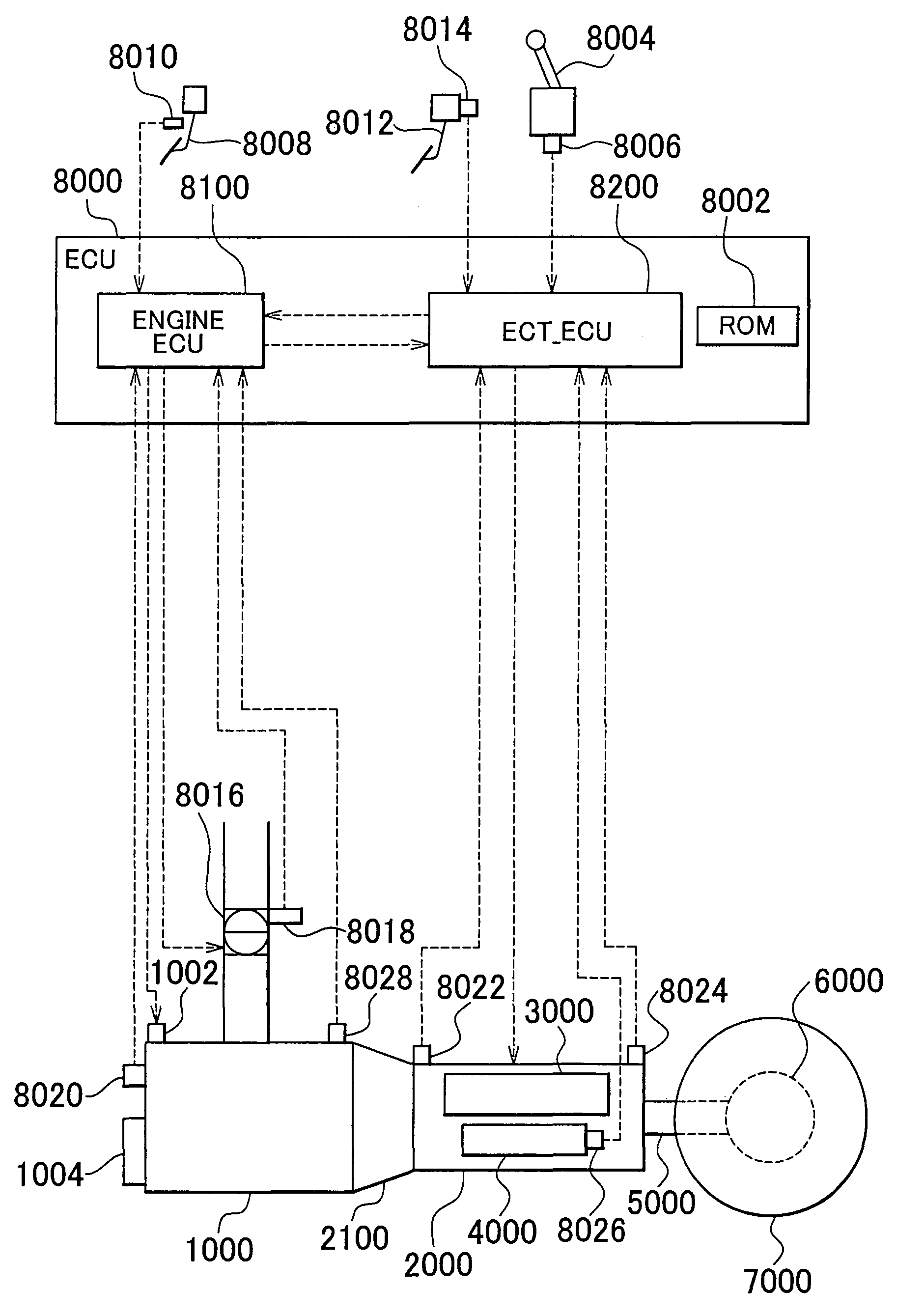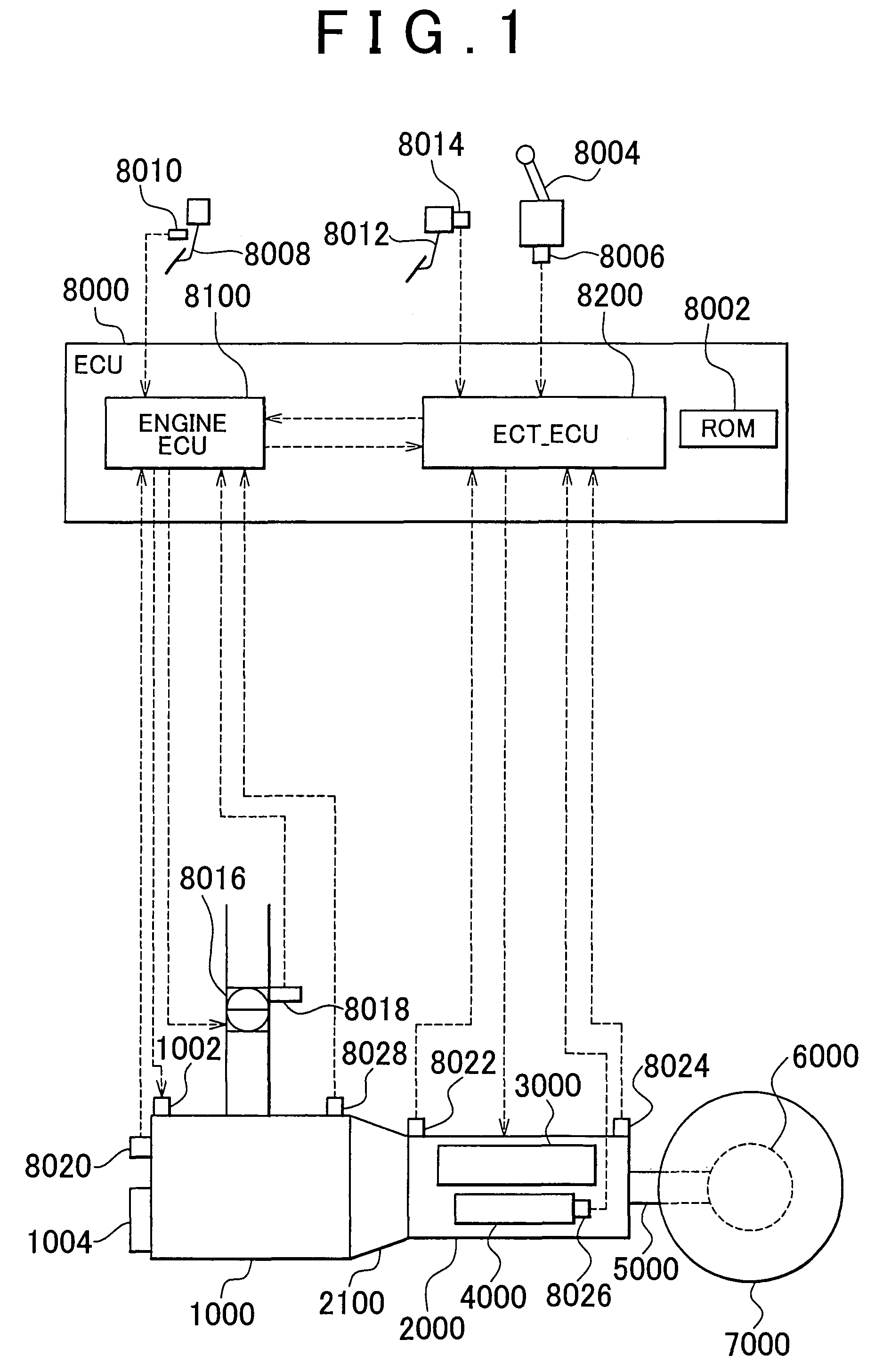Apparatus for and method of controlling power train, and storage medium storing program for implementing the method
a technology of power train and power train, which is applied in the direction of mechanical apparatus, instruments, transportation and packaging, etc., can solve the problems of insufficient prevention of the reduction of the output torque of the automatic transmission in the inertia phase of a downshift, and the shock occurs, so as to reduce the shock
- Summary
- Abstract
- Description
- Claims
- Application Information
AI Technical Summary
Benefits of technology
Problems solved by technology
Method used
Image
Examples
Embodiment Construction
[0034]An embodiment of the present invention will be described below with reference to drawings. In the following description, the same parts are denoted by the same reference numeral. The name and function of these parts are the same. Hence, detailed description of such parts will not be repeated.
[0035]Referring to FIG. 1, a vehicle in which a controller according to the embodiment of the present invention is installed will be described. The vehicle is an FR (Front-engine, Rear-drive) vehicle. The vehicle may be a vehicle that is not an FR vehicle.
[0036]The vehicle includes: an engine 1000; an automatic transmission 2000; a torque converter 2100; a planetary gear unit 3000 constituting part of the automatic transmission 2000; a hydraulic circuit 4000 constituting part of the automatic transmission 2000; a propeller shaft 5000; a differential gear 6000; rear wheels 7000; and an ECU (Electronic Control Unit) 8000.
[0037]In this embodiment, a power train includes the engine 1000 and th...
PUM
 Login to View More
Login to View More Abstract
Description
Claims
Application Information
 Login to View More
Login to View More - R&D
- Intellectual Property
- Life Sciences
- Materials
- Tech Scout
- Unparalleled Data Quality
- Higher Quality Content
- 60% Fewer Hallucinations
Browse by: Latest US Patents, China's latest patents, Technical Efficacy Thesaurus, Application Domain, Technology Topic, Popular Technical Reports.
© 2025 PatSnap. All rights reserved.Legal|Privacy policy|Modern Slavery Act Transparency Statement|Sitemap|About US| Contact US: help@patsnap.com



